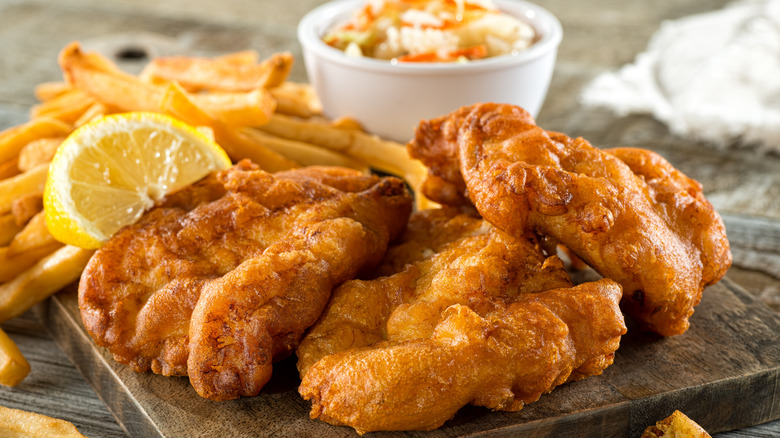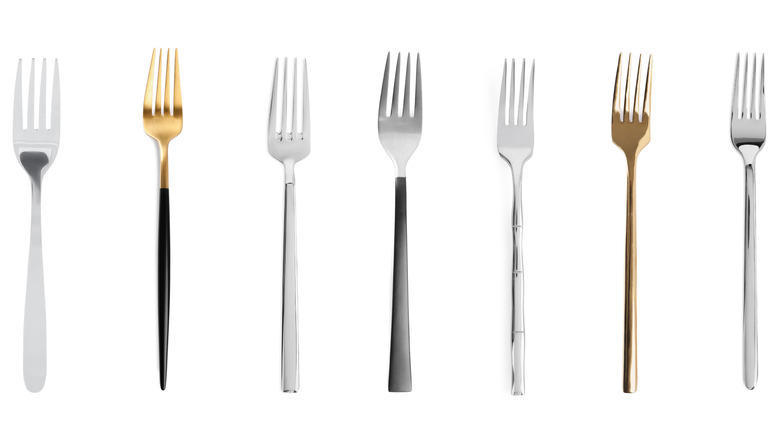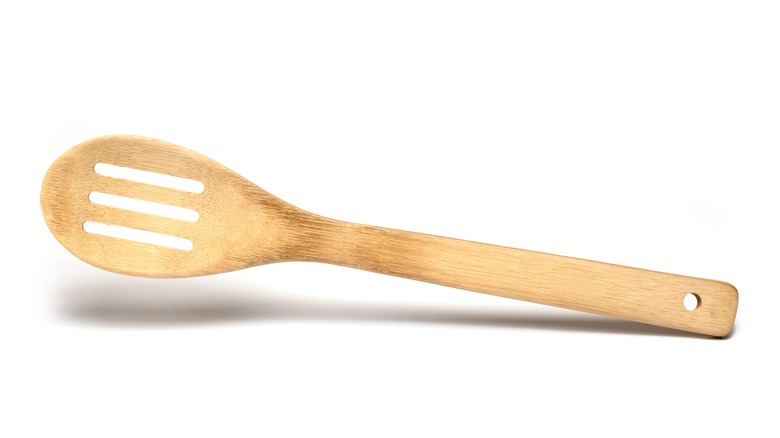The Kitchen Tool Mistake To Avoid For Perfect Fried Fish Every Time
Even if you're not the most confident cook, it's pretty easy to fry a piece of fish. The hardest part is nailing the batter and making sure the oil is the right temperature, but as long as you have a good recipe and a calibrated thermometer you've got nothing to worry about. Before you drop any fish into the frying pan, however, put down the kitchen tongs.
Fried fish batter and kitchen tongs are not friends. The raw batter needs to be wet and sticky so that it adheres to the piece of fish, while tongs have a lot of surface area for gripping food that will also stick to the batter. If you use tongs for dropping your fish into the oil, the tongs will pull patches of batter away from the fish, which could result in bare spots. Even worse, when it's time to take the fish out of the oil, tongs can rip through the delicate crust. Tongs might be a trusty tool for lots of other cooking jobs, but when it comes to perfectly frying fish, your best friends are a table fork and a slotted spoon.
Dip your fish with a fork
Frying fish is a little bit of a delicate process, especially in the beginning, because it's important to make sure that the entire piece of fish is evenly coated before it goes into the hot oil. Fish that is unevenly coated can overcook in spots and dry out, and it just doesn't look as good as an evenly coated piece of fish. While you can dip fish in the batter with clean hands, you're going to need some sort of utensil to get it from the batter bowl to the hot pan of oil so that you don't burn your fingers. The best tool for this job is a regular dinner fork, preferably one with a longer handle.
If you're ready to fry some fish, simply spear the battered portion with the fork in a thick part of the piece so that it doesn't rip, and transfer it into the pan. The fork will only make small, fork-sized holes in the fish, which will get covered up when the batter cooks and expands in the hot oil. The longer the handle of the fork, the more space there is between your hand and the hot oil, which is key for preventing oil burns if there's any splashing when the fish goes into the oil. You can also avoid splashbacks by slowly placing the fish in the oil in a motion that faces away from you so that if there is any splashing it's not towards your hand.
Use a slotted spoon to take the fish out
Once the fish is in the hot oil and starts to turn brown, put down the fork and reach for a slotted spoon to finish the job. Any type of slotted spoon will work well for touching the fish in the oil, but a wooden or bamboo model is best because it won't have any thin edges that can break through the delicate surface of the fried fish. If you tend to fry frequently, it's not a bad idea to upgrade to a spider skimmer, which is a wire basket on the end of a handle, but for infrequent jobs a slotted spoon will work just fine.
Flip the fish over in the hot oil with the slotted spoon by pushing down on one side and it should turn over easily. Then, when the fish is looking crispy and golden brown, dip the spoon under the fish to gently lift it out of the pan and onto some paper towels to drain. Now, if you really need to grab your tongs, you can use them to pick up some french fries to finish plating some fish and chips.


